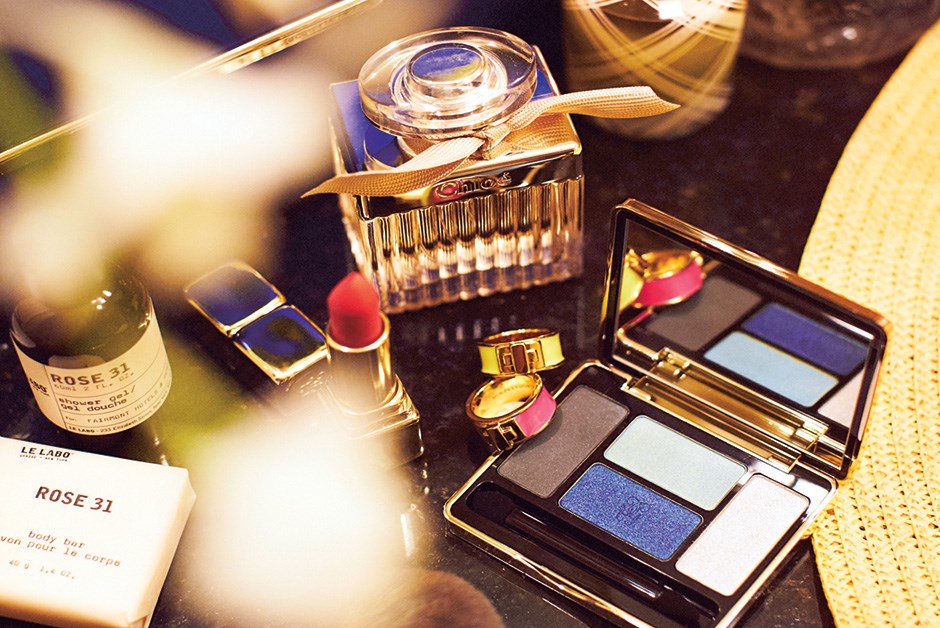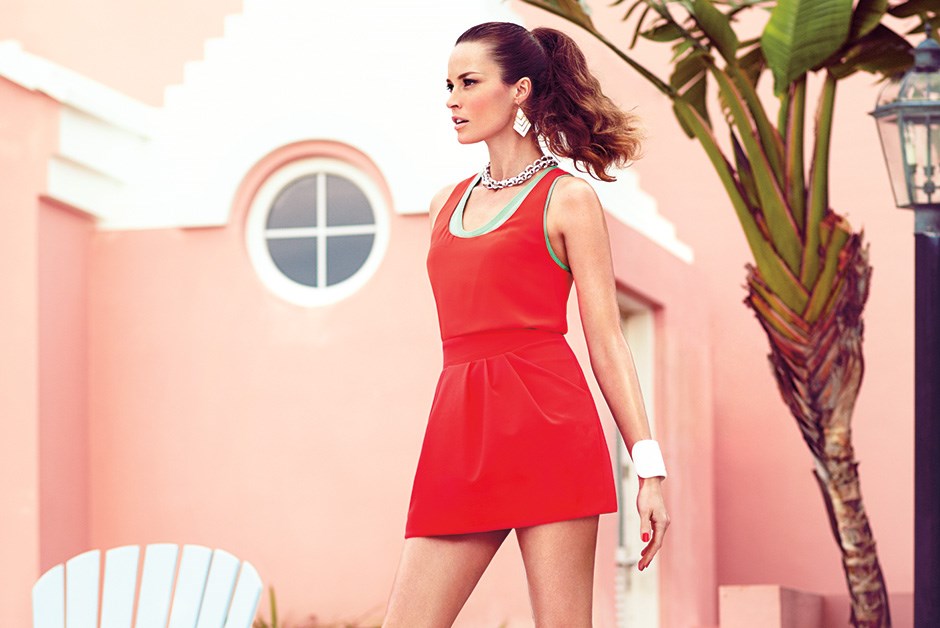At First Blush
By: Aliyah Shamsher
A Palette of ocean blues, dusty pinks and sun-scorched yellows tells the story of Bermuda’s long-standing love affair with color and the island life it inspires.
As we motor along Harbour Road through Bermuda’s utterly charming Warwick Parish I feel a bit like Grace Kelly in Alfred Hitchcock’s To Catch a Thief. And while I’m not being chased by French police and I’m nowhere near the French Riviera, I can’t help but note the similarities between the rocky cliffs of the Côte d’Azur and this two-lane road that winds through Bermuda’s main island. The porous rock that forms much of the ridged coastline continues up through the island, creating sloped hillsides and rock-walled cut-throughs.
A packed lunch from The Fairmont Southampton rattles in the back seat between James and Sarah. The children’s eyes, and those of my husband Yale, for that matter, dart back and forth trying to take in the pink, green and yellow houses that whiz past us and the kaleidoscope of bright blues that meld and fuse with the movement of the tides.
You can’t help but be enchanted by an island whose primary color is pink – it’s everywhere, from the lightest hint along the sands of the south shore to the cheerful shades of buildings and the crisp pastel of Bermuda’s eponymous shorts. Even Bermuda’s official drink, the rum swizzle, is a deep crushing coral. It’s a life that lends itself to the hues, tints and shades that surround it, inspiring a host of artists through the ages: from the striking 17th-century shipwreck that anchors Shakespeare’s The Tempest to John Lennon’s 1980 album Double Fantasy. Today, the island continues to bare its soul in the most elaborate of colors.
Oleander is everywhere; it permeates the air. As I look outward from my balcony, old-growth Bermudian cedar rubs elbows with swaying palms, while at ground level a sea of hibiscus hedges, aloe plants and ferns punctuate the Bermudian grass – an Old World species whose roots lie deep in the Mediterranean.
Our drive east toward the historic parish of St. George’s proves a lesson in Bermudian flora. Orange, red, purple and a lush enclave of greens surround us from all sides as we make our way to Paget Parish for a stop at the Masterworks Museum of Bermuda Art. It’s fitting that a sculpture by Bermudian Graham Foster commemorating Lennon’s Double Fantasy greets us in the cobblestone courtyard. The museum shares real estate with the Bermuda Botanical Gardens, which Lennon walked through many times in the summer of 1980, taking inspiration from a species of freesia unique to the gardens for his album’s namesake.
It’s been 26 years since creative director Tom Butterfield first thought to repatriate works of art inspired by the island and today you can find more than 1,400 works attributed to artists like Henry Moore, Winslow Homer and Georgia O’Keefe. Even the hard-edged cubists couldn’t ignore the colorful Bermudian landscape, as French artist Albert Gleizes proves in his explorations of the three-dimensional that still feature every shade of pink, orange, yellow and green.
As we continue along the road to St. George’s, it’s the honking that gets us. An island comprised of a little more than 64,000 people, many of whom can trace their lineage back to 17th-century founding families (some having arrived by shipwreck), this is an island of friends and relatives. A honk along the roadway is a passing Bermudian hello; it’s as pervasive as the church steeples that dot the landscape.
In the historic town there’s a moment when the kids are still – the sweeping arches and heavy cedar woodwork of St. Peter’s Church have rendered James and Sarah (almost) silent. Their hands graze over the 400-year-old wooden pews with their simple yet beautiful decoration, framed by unadorned rock walls older than St. George’s itself. Outside, as the sun shines on Bermuda’s first settlement, the coiling narrow streets around the town square give us an astounding up-close view of the evolution of Bermuda’s colonial architectural style. A honk is heard down the road, and while church bells ring through the town, from our outlook on the church steps all we can see is white. James points south and we all marvel at the limestone-washed roofs that stretch out toward the sea.
(Photos by Chris Nicholls)





